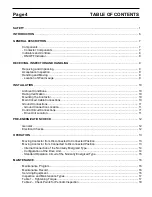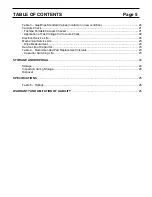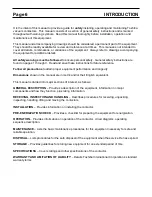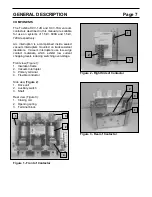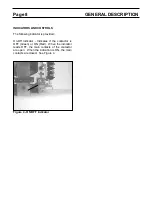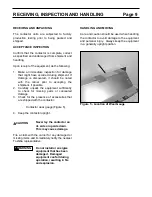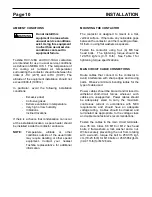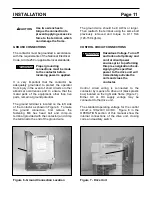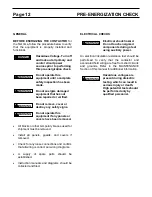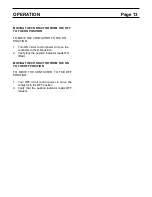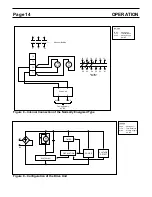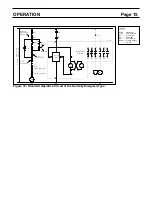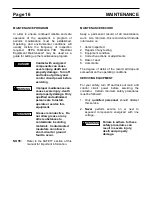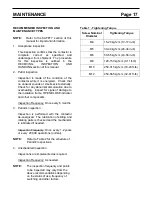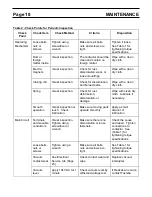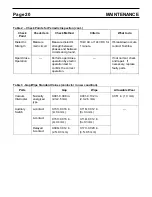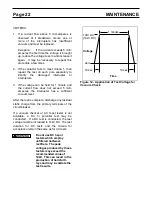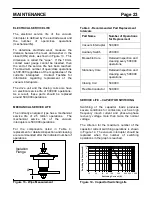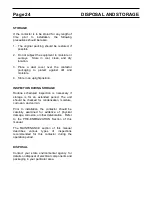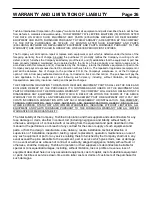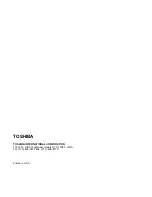
Page 18
MAINTENANCE
Table 2 - Check Points for Periodic Inspection
Check
Point
Check Item
Check Method
Criteria
Disposition
Operating
Mechanism
Loose bolts,
nuts or
screws
Tighten using
screwdriver or
wrench.
Make sure all bolts,
nuts and screws are
tight.
Tighten if loose.
See Table 1 for
tightening torque
specifications.
Dust or
foreign
matter inside
Visual inspection.
The contactor should be
clean and contain no
foreign matter.
Wipe with a clean
dry cloth.
Electro-
magnets
Visual inspection.
Check for rust,
discoloration, wear, or
loose mountings.
Wipe with a clean
dry cloth.
Closing coil
Visual inspection.
Check for discoloration,
and burned parts.
Wipe with a clean
dry cloth.
Spring
Visual inspection.
Check for rust,
deformation,
discoloration, or
damage.
Wipe with clean dry
cloth. Lubricate if
necessary.
Smooth
operation
Visual inspection or
touch. Check
lubrication.
Make sure moving parts
operate smoothly.
Apply a small
amount of
lubrication.
Main Circuit Terminals
and movable
conductors.
Visual inspection.
Tighten using
screwdriver or
wrench.
Make sure there is no
discoloration or loose
fasteners.
Check the cause
and repair. Tighten
connections to
contactor. See
(Table 1) for
tightening torque
specifications.
Loose bolts,
nuts or
screws
Tighten using a
wrench.
Make sure all bolts,
nuts and screws are
tight.
See Table 1 for
tightening torque
specifications.
Vacuum
contact wear.
See Electrical
Service Life (Page
Check contact wear and
wipe.
Replace vacuum
interrupter.
Vacuum
level.
Apply 10kV AC for 1
minute.
Check vacuum level by
withstand voltage test.
If breakdown occurs,
contact Toshiba.

